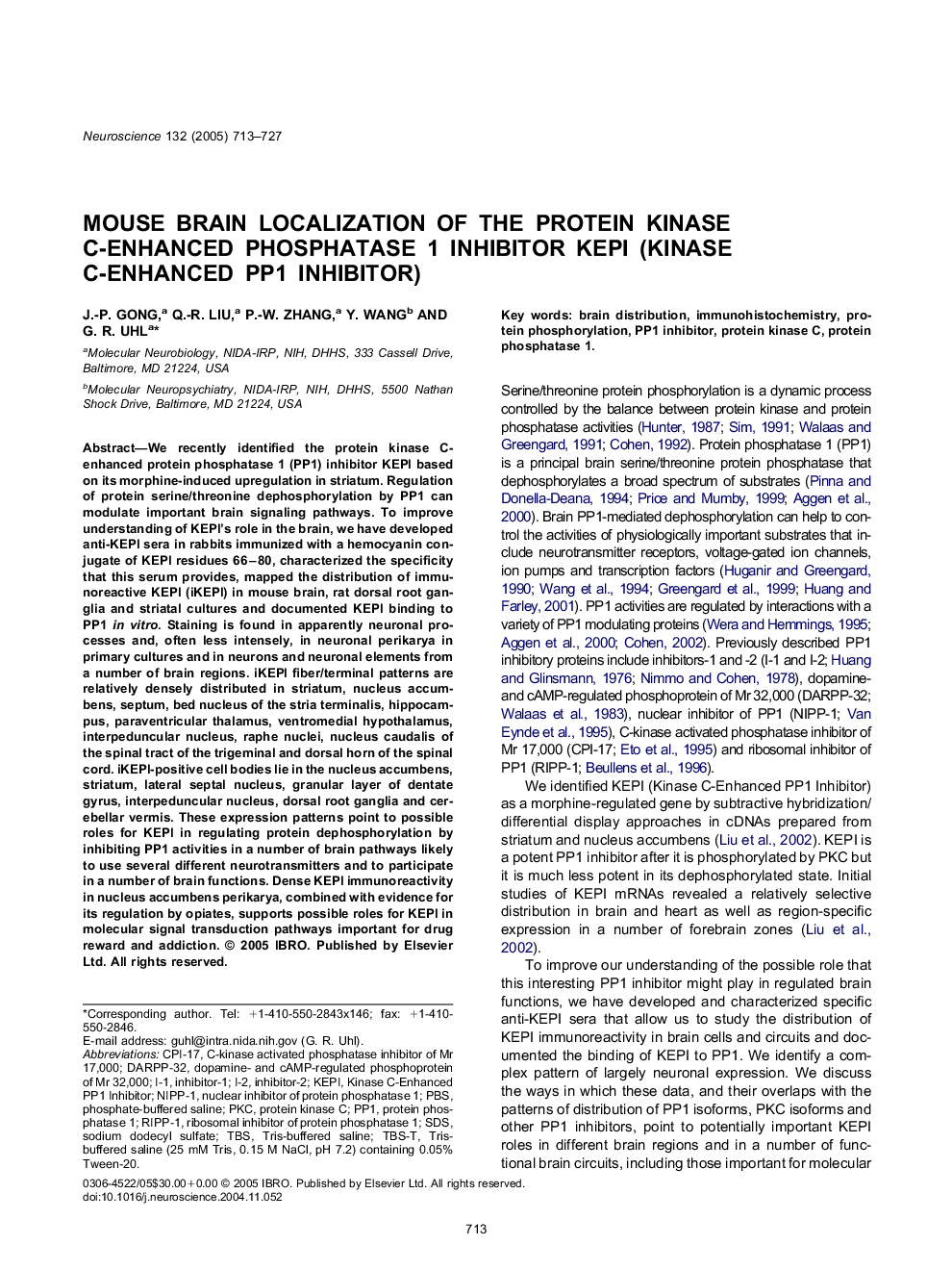| Article ID | Journal | Published Year | Pages | File Type |
|---|---|---|---|---|
| 9426727 | Neuroscience | 2005 | 15 Pages |
Abstract
We recently identified the protein kinase C-enhanced protein phosphatase 1 (PP1) inhibitor KEPI based on its morphine-induced upregulation in striatum. Regulation of protein serine/threonine dephosphorylation by PP1 can modulate important brain signaling pathways. To improve understanding of KEPI's role in the brain, we have developed anti-KEPI sera in rabbits immunized with a hemocyanin conjugate of KEPI residues 66-80, characterized the specificity that this serum provides, mapped the distribution of immunoreactive KEPI (iKEPI) in mouse brain, rat dorsal root ganglia and striatal cultures and documented KEPI binding to PP1 in vitro. Staining is found in apparently neuronal processes and, often less intensely, in neuronal perikarya in primary cultures and in neurons and neuronal elements from a number of brain regions. iKEPI fiber/terminal patterns are relatively densely distributed in striatum, nucleus accumbens, septum, bed nucleus of the stria terminalis, hippocampus, paraventricular thalamus, ventromedial hypothalamus, interpeduncular nucleus, raphe nuclei, nucleus caudalis of the spinal tract of the trigeminal and dorsal horn of the spinal cord. iKEPI-positive cell bodies lie in the nucleus accumbens, striatum, lateral septal nucleus, granular layer of dentate gyrus, interpeduncular nucleus, dorsal root ganglia and cerebellar vermis. These expression patterns point to possible roles for KEPI in regulating protein dephosphorylation by inhibiting PP1 activities in a number of brain pathways likely to use several different neurotransmitters and to participate in a number of brain functions. Dense KEPI immunoreactivity in nucleus accumbens perikarya, combined with evidence for its regulation by opiates, supports possible roles for KEPI in molecular signal transduction pathways important for drug reward and addiction.
Keywords
Related Topics
Life Sciences
Neuroscience
Neuroscience (General)
Authors
J.-P. Gong, Q.-R. Liu, P.-W. Zhang, Y. Wang, G.R. Uhl,
